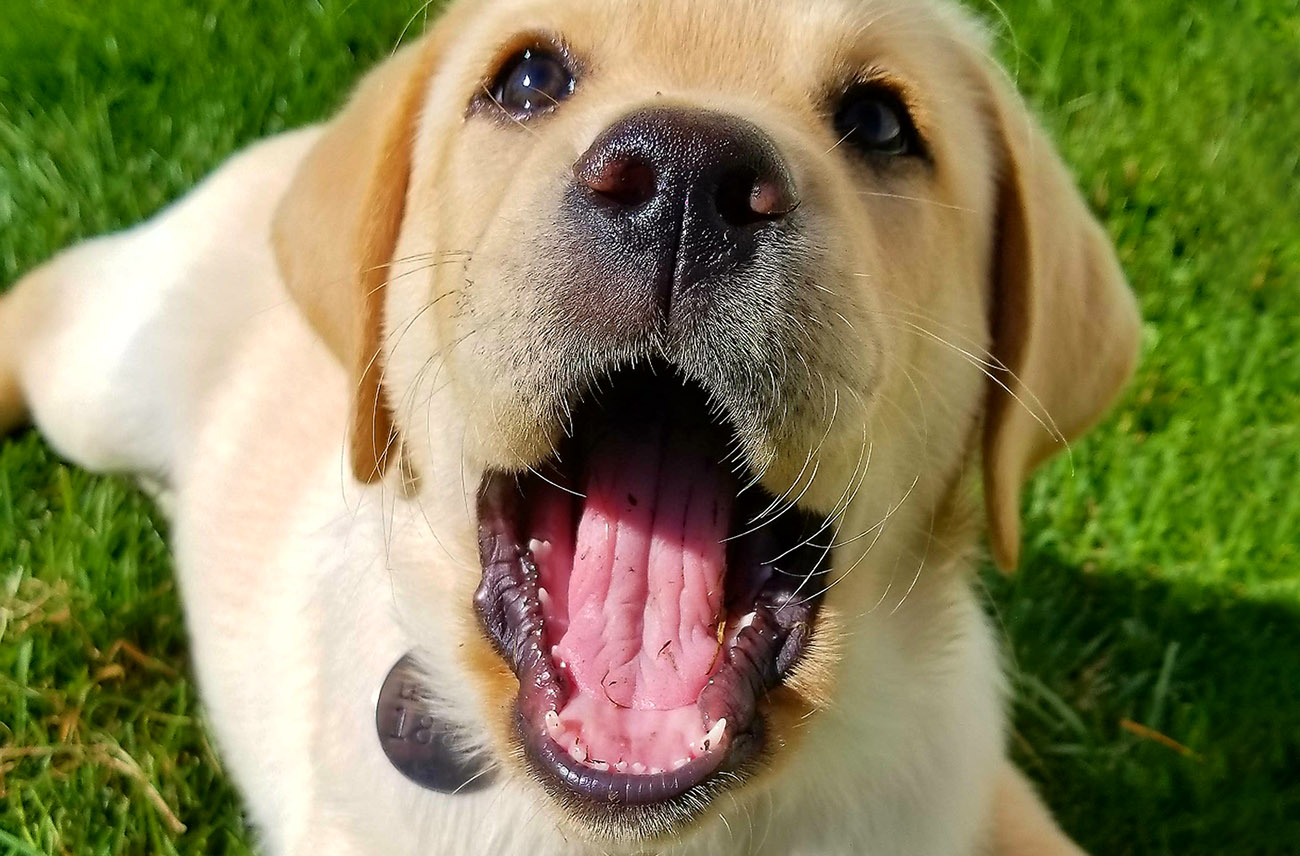How to Manage Puppy Biting

If you’ve ever spent time with a young puppy, you probably experienced the “shark teeth” phase. If you were frustrated with how often your puppy was biting, the good news is that it’s perfectly normal for puppies under 5 months of age to use their mouths on everything! However, you don’t want your young dog to grow up thinking it’s okay to bite (and your hands, apparel and furniture might need a break), so here are some do’s and don’ts to help you guide your puppy to use its mouth appropriately.
Do:
- Snuggle and pet your puppy when it’s relaxed or sleepy. Your hands are exciting teeth targets when they’re close to the puppy’s mouth, so putting them nearby when your puppy has less energy to bite reinforces the idea that getting petted is not an opportunity for nibbling.
- Have toys handy so that you can redirect biting behavior when you’re playing with your puppy. If you’re sitting down with the puppy and it gets overly excited, stand up and end the game. Reward good behavior, such as sitting, with a treat or another chance to play.
- Keep your puppy entertained. Teach games such as low-key fetch or hide and seek with toys.
- Have treats handy to reward good behavior. Teaching your puppy to sit and stay in a certain spot (such as on a mat or dog bed) while you walk by is a handy behavior to use. You can toss a treat or kibble on your puppy’s “spot” to make it a good place to be and reward the puppy with another treat when it visits and stays in that spot.
- Keep track of the times of day when your puppy is more likely to be bitey.
- Use a crate and/or baby gates to create safe play areas. If your puppy doesn’t have access to yummy chair legs in the first place, then you don’t need to worry about teaching it to leave the furniture alone.
- Every two or three days, rotate the toys that your puppy can access. This helps to prevent the toys from becoming boring.
- Make sure your puppy gets regular naps. Growing puppies need lots of rest, and a tired puppy is more likely to bite.
- Prevent your puppy from having the opportunity to bite, indoors and out. If your puppy is wildly biting at you or the leash when you’re out on a walk, straighten your arm and hold the puppy out away from you (make sure all four paws are on the ground) until it calms down. In the house, you can let your supervised puppy drag a light, long leash around, and if biting starts to happen, you can step on the lead until it stops.
Don’t:
- Touch your puppy on the head. Puppies invite play with other puppies by biting at faces, so petting your puppy on the head is a signal to bite and play. Scratch your puppy on the chin or chest instead.
- Wrestle with your puppy. Wrestling invites biting and rough play. In addition, your puppy needs to accept handling of all different body parts for grooming and veterinary exams. Wrestling will make it more difficult for your puppy to stay calm while being examined or groomed.
- Shove or wiggle toys in your puppy’s face. Wiggle a toy along the ground instead.
- Use punishment-based techniques (holding the puppy’s jaw, holding the mouth shut, etc.). The fallout from these techniques can make a puppy hand-shy.
- Use repetitive verbal cues (“no,” “no bite,” “ouch,” etc.). If you’re repeating your cues, they’re not working, and that will teach your puppy that your words have no meaning. On top of that, if your puppy is biting for attention, giving verbal recognition will actually reward that behavior.
Additional Tips
Is your puppy getting enough mental stimulation? Try exposing your puppy to something new, teaching a new trick or game, or feeding meals in a KONG or other food-dispensing toy. Anything that encourages your puppy to use its brain will help use up that puppy energy and make it easier for you to manage.
Being prepared for your puppy’s behavior and making a plan will help keep you from getting frustrated when good manners go out the window. Have a crate and a KONG filled with kibble, small amounts of peanut butter, biscuits or other food ready (freezing the stuffed KONG helps the filling last longer) so that when you just don’t have time to deal with puppy biting, there’s a safe place for your puppy to go and amuse itself while you do other things.
As with all dog training, consistency is key. You may need to try different techniques to see what works best for you and your puppy, but don’t give up when the puppy’s behavior doesn’t change overnight. Your puppy is learning and growing, and keeping your behavior consistent will help your dog to be consistent as well. Make sure every member of your family is on the same page! With time and patience, your puppy will learn to use its teeth in ways that make both of you happy.
The post How to Manage Puppy Biting appeared first on Leader Dogs for the Blind.





Post a Comment